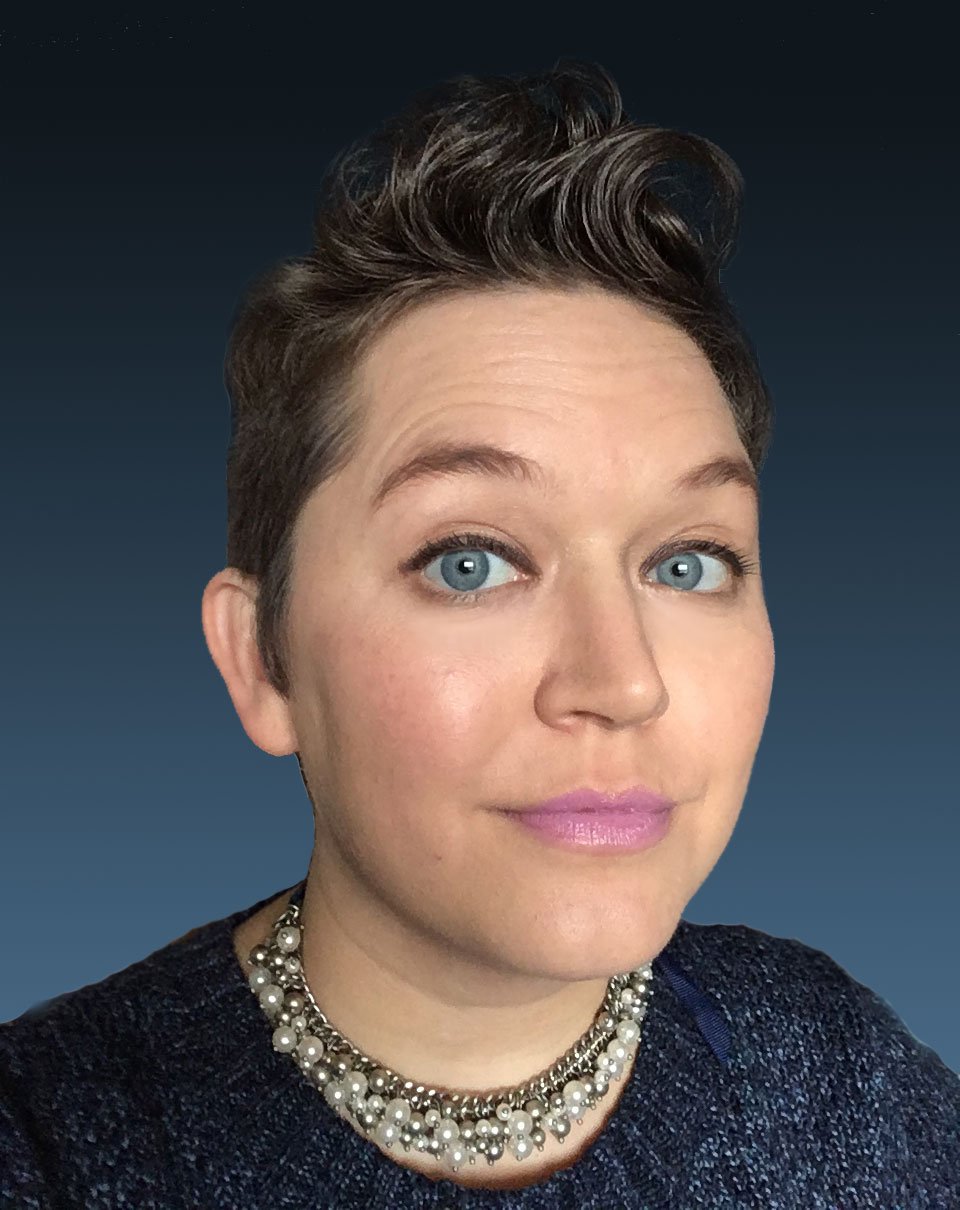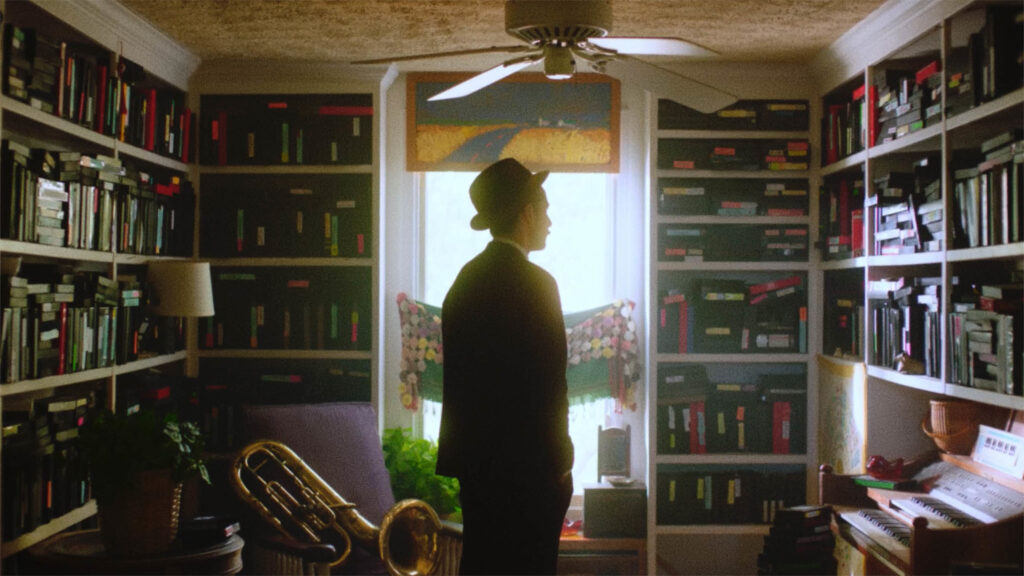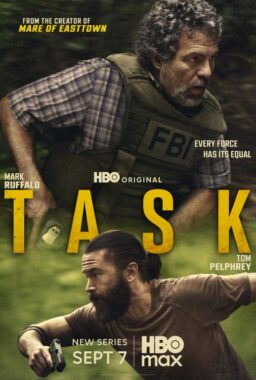The line between reality and dreams are blurred in three daring selections from Sundance’s NEXT section. These three films employ nostalgia, lore, and modern myths in tales terrifying and tender.
Kentucker Audley and Albert Birney write, direct, and co-star in “Strawberry Mansion,” a fantasy film named for a curious gateway to a realm of romance, conspiracy, and product placement. In a not-so-distant future, James Preble (Audley) is the kind of mild-mannered pencil pusher found in Terry Gilliam’s dystopias. By day, Preble plugs into machines that allow him to audit the recorded dreams of private citizens, taxing them for every high price fantasy, from buffaloes to picturesque views. By night, his own dreams are thrifty affairs. All are set in a cramped, Pepto Bismol pink room, where he is visited by a jolly stranger who proffers a glossy bucket of Cap’n Kelly fried chicken. Preble thinks nothing of it when he awakes the next morning hankering for that specific snack. That is until he meets Bella (Penny Fuller), an elderly “atmosphere creator” he is tasked with auditing.
Bella is a deeply eccentric woman, who lives in a remote, candy-colored house, wears a curious helmet, and won’t let Preble enter until he’s licked her ice cream cone. (This is not a euphemism.) Inside, he’s shocked to discover decades of dreams recorded on the obsolete stock of VHS tapes. Poring through a lifetime of dreams, Preble is enchanted by a younger version of Bella (Grace Glowicki), who guides him through fantastical lands of Frog Waiters, Mice Sailors, and a growling Blue Demon (Birney). Along the way, Preble falls hard for Bella and learns the unnerving secret about how dreams are being manipulated by capitalist overlords. Like a Gilliam hero, Preble must break from the bonds of conformity and government control to chase his dream of love and freedom.
Though Gilliam feels a major influence to “Strawberry Mansion”s plot and its temporal slipperiness, the vibe of the film is more Michel Gondry. Audley and Birney paint their dystopia with the vibrant colors of children’s books. The critters that frolic within dreams are clearly humans, topped with masterfully crafted—but oversized—animal masks. The machinery Preble employs is all obviously built from cardboard and paper cups painted silver. This willfully crafty aesthetic creates a world that is beguiling in part because it’s obviously handmade. Our eyes are intentionally drawn to the artifice and the artistry, refusing to let us take anything for granted, inviting us to stop and smell the roses—or lick the ice cream.
The winsome visuals alone are enough for me to recommend “Strawberry Mansion.” Yet within this enchanting aesthetic, Audley and Birney craft a compelling story that’s mind-bending and heartwarming. The performance style of the cast is muted, almost as if Preble is afraid speaking too loudly might wake him from a wonderful dream. Instead of tearful scenes of bombastic romantic gestures, the love story is built in moments of blissful silence. Who needs a kiss with a soaring orchestra score, when you’ve got a sunny day with a beautiful girl gently embracing a ghillie-suited Preble? The image is odd, but the tenderness is evident as she strokes his long synthetic grass. While the scene lingers on this simple action, we’re invited to savor how much this affection means, even if we can’t see our hero’s eyes through the curious camouflage.
All this makes for a film that feels like walking through another’s dream, essentially putting us in Preble’s precisely tied dress shoes. We walk in as curious observers, but walk out dizzy from the wonders found within another’s mind. Simply put, “Strawberry Mansion” is sensational, strange, and sophisticatedly sweet.

Also offering a dreamlike atmosphere to NEXT is Dash Shaw’s “Cryptozoo,” an animated adventure inspired by legendary beasts and his wife Jane Samborski’s all-female “Dungeons & Dragons” group. With Dash as writer/director and Samborski as animation director, the couple spent five years creating a party of heroes, questing to save cryptids from a brutal black market that would strip them for parts and a merciless mercenary who’d sell them to the military as weapons. While much of the human world thinks things like unicorns, dragons, and centaurs are figures of fiction, Lauren Gray (voiced by Lake Bell) knows they are real and in need of allies. Her dream is to introduce these incredible creatures to the world, via Cryptozoo. Think Jurassic Park for mythical critters. Intended as a sanctuary, this yet to open attraction could be a safe space for humans and cryptids to interact peaceably.
As such, Lauren dedicates herself to tracking down cryptids in the wild so they might be protected in her captivity. Questions of exploitation and capitalist corruption are raised by cryptid cohort, Phoebe (Angeliki Papoulia), a gorgon who passes as human with the help of colored contacts, a headscarf, and snake tranquilizers. But their political arguments must be put aside as they seek an uncovered Baku (a Japanese tabir that eats nightmares). Lauren, Phoebe, and friends must find this mythic animal before it’s captured by nefarious forces.
With globe-trekking, action sequences aplenty, and a panoply of fantastical creatures, the concept could suit a big-budget blockbuster on par with “Godzilla vs. Kong.” However, distinctive elements make this deeply art house terrain, including a frankness about full-fronted nudity and an animated orgy scene. Besides adult content, Shaw employs a simplistic animation style that is far from commercial. His characters are two-dimensional figures with abrupt articulation and reserved expression. Their surroundings are splotches of watercolor or marker scratches that give the impression of forests or caves. By contrast, great care was granted into creating the cryptids, many of which are far more detailed in color and line than the human characters. This reflects the majesty of these creatures, giving a sense of how Lauren views her incredible quarry.
Yet for all this thoughtful plotting and intriguing visuals, this adventure feels flat. Where “Strawberry Mansion” felt like walking into a dream, “Cryptozoo” was putting me to sleep. I blame Dash’s direction of his voice cast. He’s got a promising ensemble that includes recognizable voices like Jason Schwartzman, Peter Stormare, and Michael Cera. His heroine is played by Lake Bell, who is a stellar voice actor, most recently winning praise for bringing fresh life to the jaded yet passionate Poison Ivy in “Harley Quinn.” But in this movie, they all speak in a grueling monotone. Action sequences boast blood, body-horror, and sky-high battles between beasts and helicopters. And yet these animated characters do not yowl, snarl, or even speak with a smile. They talk in weary whispers or through gritted teeth, smudging every emotion into one note of drudgery. Sadly, this drags down all the bits that might be exciting, thrilling, or fun into a muck of tedium.

From ancient cryptids to creepypasta, “We’re All Going To The World’s Fair” invites audiences into the mind-bending realm of internet horror lore. You’ve heard of Slender Man. Writer/director Jane Schoenbrun is drawing inspiration more from the societal panics over Momo and the Blue Whale Challenge, online games believed to lead innocent children down dark paths of self-destruction. Newcomer Anna Cobb stars as a lonely teen girl, who is desperately seeking attention online. Specifically, she’s joined the World’s Fair Challenge, a dare that’s supposed to unlock a waking nightmare. Think Bloody Mary but with voyeurism.
Casey posts a video of her doing the ritual of chanting, blood, and self-recording. Then she waits for the world around her to change. The first sign comes in the form of a message from a stranger, who says he’s watching out for her. All she needs to do is send him videos of her sleeping. Tapping into fears of pedophiles lurking online, Schoenbrun reveals Casey’s ally to be a middle-aged man (Michael J. Rogers), who pores over her videos obsessively. Yet the horror here comes from Casey’s deep need for love being perverted to risky exhibitionism.
She’s not trying to be alluring. She’s trying to be scary, to prove that the horror game has chosen her as a victim. Videos of other World’s Fair Challenge-takers give her a playbook. They post videos of self-flagellation, freaky filters, creepy makeovers, and cryptic rants masquerading as an epiphany. Within these videos, Schoenbrun plants scares that are seriously spine-tingling. One is a superbly executed bit of body horror, employing scabs and a prize-ticket. Casey’s rely more on anticipation and Cobb’s eerie performance, but sting all the same.
In jolting defiance toward the TikTok trademark of terseness, these web vids are ponderous and unblinking. Even a jaunty video of Casey doing a dance trend goes on for longer than anticipated. This makes the film feel sluggish, even at 86 minutes. Thankfully, this pacing has a payoff, dragging us into the unease of such long sequences. As the video plays of Casey sleeping, you might fidget with impatience. You might wonder why this bit—where nothing is happening for such a long time—is in the movie at all. Then comes the creeping certainty, something will happen. When it does, it’s not so major as to payoff for all your patience. Still, it’s impossible to deny that Cobb is something special.
Her face is wide, soft, and open, reminiscent of a young Elliot Page. When Casey plays the game, her nervousness flashes in the twitches of her lips. When her father caterwauls from outside her bedroom door, her cringe cuts to the core. Schoenbrun offers a suffocatingly narrow view of Casey’s life, caging her in a bedroom with no IRL friends, no activities beyond this game and her exchanges with the crouching creep, and no interaction with her parents beyond the aforementioned bellow. The internet is supposed to open up the world for users, but for Casey, it is where she is burying her soul. The real world around her becomes purely backdrop to her increasingly creepy videos. With each, it’s more and more unclear if she’s performing for her online audience or believes she is truly damned by the World’s Fair Challenge.
In this way, “We’re All Going To The World’s Fair” is a sinisterly cerebral horror offering. Though Schoenbrun unfurls scares that could well thrill without context, the deeper ambition is clearly to scorch souls with how internet validation can prove horrifically isolating. While I admire the intellectual ambition of this experiment, the actual experience of watching the film is a dreary and frustrating one. Cobb’s vulnerability lures us in; the spooky challenge hooks us. The introduction of the lurking man rankles just right. But the film overall is a laborious watch, lacking the frenzied energy of online trends or the haunting uncertainty of internet bogeymen.












